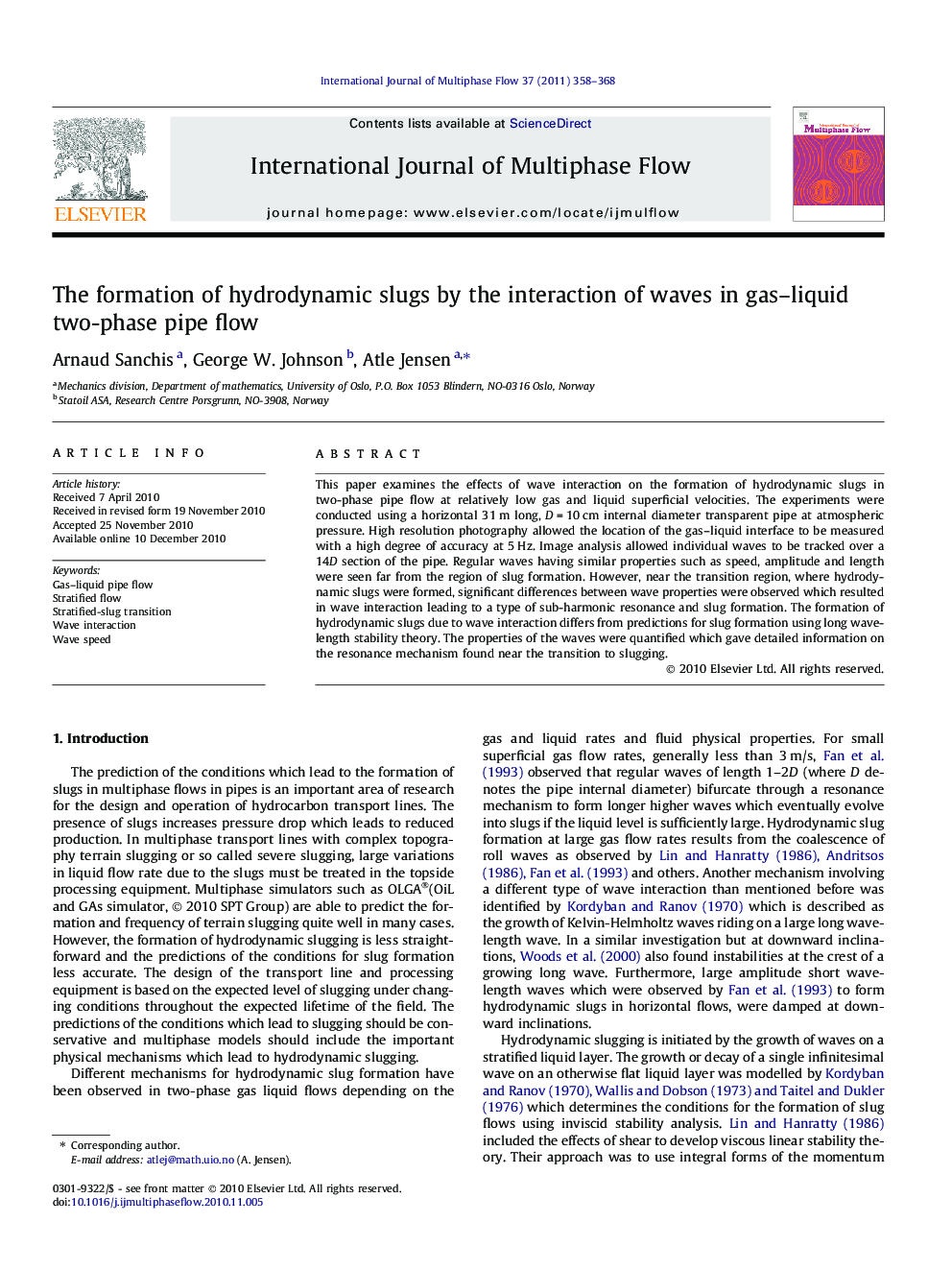| Article ID | Journal | Published Year | Pages | File Type |
|---|---|---|---|---|
| 666873 | International Journal of Multiphase Flow | 2011 | 11 Pages |
This paper examines the effects of wave interaction on the formation of hydrodynamic slugs in two-phase pipe flow at relatively low gas and liquid superficial velocities. The experiments were conducted using a horizontal 31 m long, D = 10 cm internal diameter transparent pipe at atmospheric pressure. High resolution photography allowed the location of the gas–liquid interface to be measured with a high degree of accuracy at 5 Hz. Image analysis allowed individual waves to be tracked over a 14D section of the pipe. Regular waves having similar properties such as speed, amplitude and length were seen far from the region of slug formation. However, near the transition region, where hydrodynamic slugs were formed, significant differences between wave properties were observed which resulted in wave interaction leading to a type of sub-harmonic resonance and slug formation. The formation of hydrodynamic slugs due to wave interaction differs from predictions for slug formation using long wavelength stability theory. The properties of the waves were quantified which gave detailed information on the resonance mechanism found near the transition to slugging.
